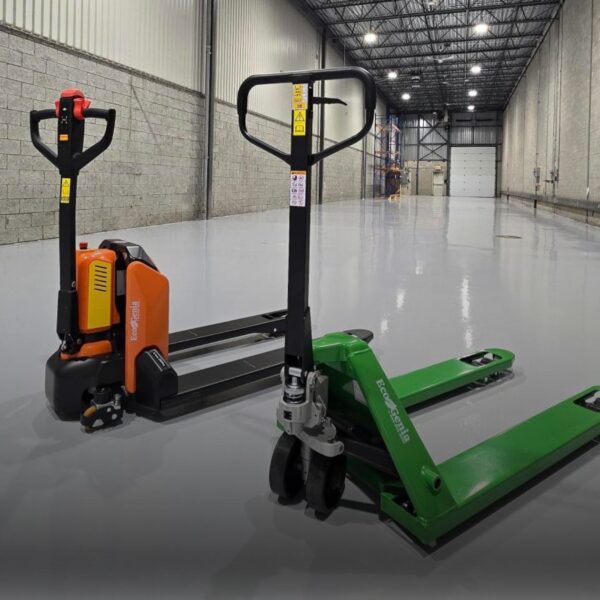In the fast-paced world of logistics and supply chain management, load stability is more than just a best practice — it’s a necessity. Every year, companies lose thousands of dollars due to pallet damage during transport, shipment loss, and product breakage. For businesses shipping on pallets, overlooking the basics can hurt your bottom line and your reputation.
Whether you’re a warehouse manager, logistics coordinator, or operations leader, understanding what can cause pallet damage during transport can help you tighten your processes and deliver consistent results, from warehouse to destination.
The real cost of poor load stability
When your pallet fails during transport, the consequences can be far-reaching:
-
- Damaged goods lead to costly returns, product replacement costs, and fulfillment delays.
- Shipment loss can increase operational labor costs with more time spent with replacement shipment(s), insurance claims, and customer service communication.
- Broken pallets are safety risks in the warehouse and on delivery routes. Further, any potential incidents may leave you liable depending on the cause of the damage.
- A pattern of delivery issues will erode customer trust and brand credibility, hurting you even more in the long run.
These problems are not only logistical hiccups — they directly affect margins, contractual obligations, and customer relationships.
With rising transport costs and tighter delivery windows, pallet damage during transport is a risk no business can afford to ignore. Knowing what can contribute to this is an important step in risk-mitigation, and one that you can easily tackle – read on!
Top Mistakes That Lead to Poor Load Stability
Many of the issues we see in pallet shipping trace back to a handful of avoidable missteps.
1. Overlooking Product Packaging
The stability of a pallet starts with what’s inside each box. Loose, underfilled, or poorly cushioned cartons can crush under weight or shift during transport, leading to load instability and product damage.
2. Not Considering the Pallet
Not all pallets are created equal. A mismatch between pallet size, material, or load capacity and the product being shipped can result in overhang, breakage, or collapse. Choosing the wrong pallet undermines load integrity from the start. There is also a risk when reusing pallets – as their integrity will degrade over time.
3. Stacking Without a Clear Method
Random stacking — or failing to follow a proven stacking pattern — creates uneven weight distribution and high centres of gravity. This greatly increases the chances of tipping or collapsing in transit.
4. Poor Stretch Wrap Application
Stretch film is your last line of defence — but only if applied correctly. Common issues like not enough wrap, uneven tension, or pallet wrap not working due to incompatible film all reduce containment force and increase movement during transit.
How to Improve Load Stability and Avoid Costly Damage.
The good news? These issues are all easily avoidable when you have the knowledge to address it before it happens. Here’s what you can do:
- Audit your packaging supplies:
-
- Review your product quality and selection often. Make sure you keep in mind that having different products, weights, or pallet stacks can mean you will need different packaging supplies for each. Working with an expert in packaging will help to make sure you have the right products for the job.
-
- Review your process:
-
- Every step matters. Review the entire process with your team from the beginning. Base packaging, including what goes into the boxes if your products are boxed, palletizing, load containment and reinforcement, and finally stretch wrapping before the pallet is ready for the truck.
-
- Standardize protocols:
-
- Make sure all elements of your packaging process have a documented protocol for team members to follow. This removes the guesswork for those on the warehouse floor, especially with new hires or if someone is taking over a process temporarily, ensuring that things are done the correct way every time.
-
- Document all complaints or Issues:
-
- Ensure you have a system for tracking any potential losses from pallet damage that occur during transport so that you can investigate errors and trends that arise. If you keep track of everything, it will be easier for you to pinpoint where things may go wrong.
-
- Work with experienced vendors:
-
- You are an expert in your business, and you should be able to rely on your vendor as an expert in industrial packaging. If your vendor cannot troubleshoot on site, or is unresponsive to issues you have with your packaging, are they really working for you?
-
Staying proactive and implementing improvements in these areas will help you reduce damage rates, improve safety, and protect your deliveries across the supply chain.
Why Partner With DUMAK for Your Packaging?
As specialists in industrial packaging solutions, we’ve helped hundreds of businesses address these same challenges. We don’t offer one-size-fits-all advice — we work closely with your team to analyze your specific needs and customize solutions that work in your real-world operations. From reviewing your process to spot areas of improvement, to optimizing your pallet wrap systems, to providing urgent assistance when you need it most — we bring deep industry expertise and a commitment to results.
When you work with us, you’re not just buying packaging materials. You’re investing in supply chain resilience, customer satisfaction, and long-term savings.
Let’s Strengthen Your Load Stability — Together
If you’ve experienced pallet damage, shipment loss, or are wondering how to improve load stability in your operations, we’re here to help.
Contact a DUMAK expert today. Let’s make sure your next shipment arrives as securely as it left.
✉️ [email protected]
📞 1-844-933-8625




